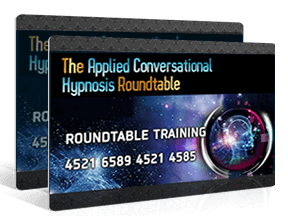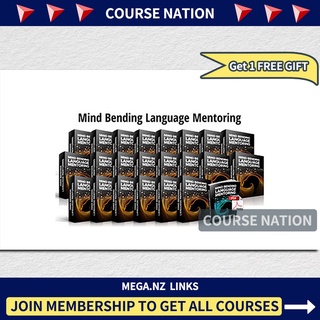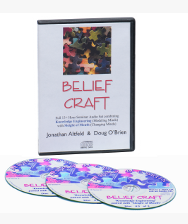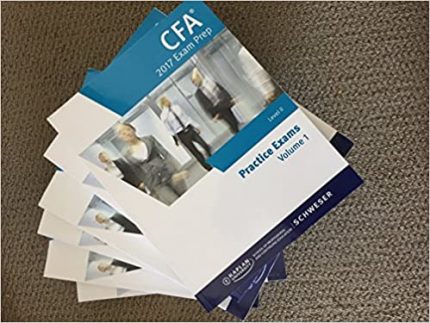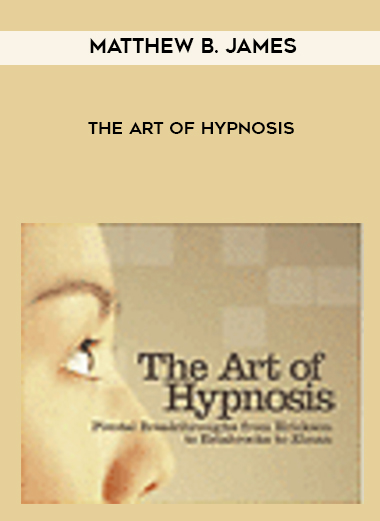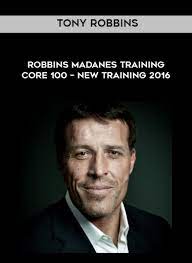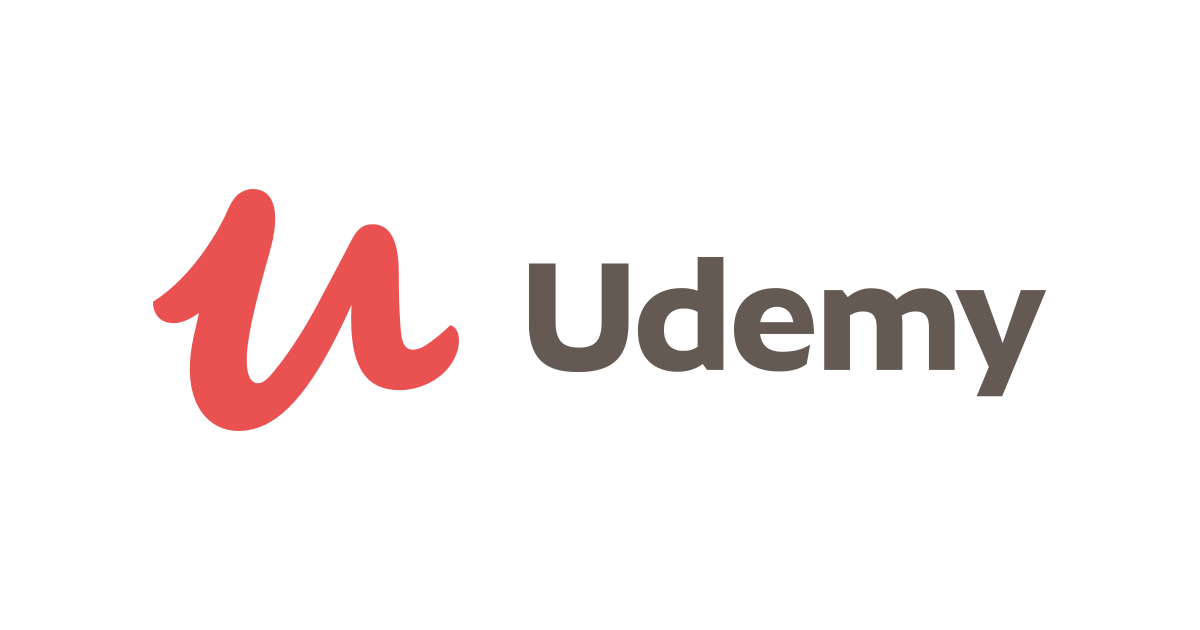
Tai Chi’s 8-Posture Form to Cultivate Balance, Harmony & Vitality with Master Helen Liang
Salepage : Tai Chi’s 8-Posture Form to Cultivate Balance, Harmony & Vitality with Master Helen Liang
Archive : Tai Chi’s 8-Posture Form to Cultivate Balance, Harmony & Vitality with Master Helen Liang
FileSize :
Embody Tai Chi as a way of life, as you learn postures to cultivate inner and outer strength, flexibility, and mental focus in a world of constant change.

During these uncertain times, many spiritual seekers are turning more deeply inward — to calm and center themselves, gain new perspectives, and become inspired to live differently.
They’re seeking out ancient modalities, timeless mindfulness tools, and deep wisdom systems.
Many seekers are discovering the power of the ancient Chinese martial art Tai Chi (Taiji) — to work with the dynamic interplay of Yin and Yang in any situation so they can calm their minds, reduce stress, lift negative energies, and bring balance back into their lives.
When you move through Tai Chi’s full circular movements, energy circulates throughout your body, feeding and revitalizing your body so you can stay grounded in the moment.
Often described as meditation in motion, Tai Chi moves your Qi (life-force energy) throughout your body, while balancing your Yin and Yang — forces that are opposite yet complementary to one another — to bring your whole being into harmony.
Join us for a 7-module course with renowned Tai Chi Master Helen Liang to experience the healing, balancing power of Tai Chi through its celebrated 8-Posture Form — a powerful yet easy-to-learn martial arts series.
In each module, you’ll explore new movements in the 8-Posture Form. You’ll begin each session by reviewing the movements and footwork you’ve learned in the previous sessions, delving deeper into the details and practices. After Helen’s repetitions and gentle corrections, you’ll move onto the new posture you’ll be learning that module.

With Helen as your guide, you’ll learn to practice anytime, anywhere. If you have physical limitations, she’ll show you how to modify the practice so it can work for you.
As you’ll discover, each pose requires a change in breathing, concentration, and balance — while helping you cultivate inner peace.
While the movements are slow and gentle, Tai Chi builds muscle strength, flexibility, and balance — and it even includes some aerobic conditioning.
Helen will show you how to apply the principle of Wu Wei in everyday life so you can go with the flow of what each day brings, adapt to change, and let the universe play itself out through you.
Master Helen Liang is the eldest daughter of Grandmaster Liang Shou-Yu, and began training in traditional Wushu at the age of four, under his strict tutelage. At the age of eleven, she was chosen to train with the Sichuan Provincial Wushu School in China and since then, she has won many gold medals in competitions throughout the world. She immigrated to Canada in 1985 and has become one of the most revered experts in North America on Chinese martial arts. Her deep wisdom and compassionate teaching style are grounded not only in her family lineage and extensive training, but also in her personal history of overcoming severe illness.
Join Master Helen and move through the gentle movements of Tai Chi’s 8-Posture Form to cultivate internal and physical strength, flexibility, mental focus, and much more.
In this highly experiential Tai Chi course, you’ll discover:
- Ways to cultivate Qi energy with slow, fluid motions
- How proper body alignment strengthens the legs and joints, releasing tension in the shoulders, chest, spine, lower back, and hips
- How to root yourself by sinking through your feet into the ground — which is essential for maintaining physical balance and centeredness, like a tree with deep roots
- How Taiji teaches the importance of balance and harmony in a world of constant change
- How to correctly move through a Taiji set or form with awareness, embodying physical principles that mirror universal principles of the Tao
- New ways to enhance the joy of your practice
- Methods to relieve tension in your limbs, muscles, and bones as you move through the 8-Posture Form
- Deep abdominal-breathing practices to promote relaxation, activate your parasympathetic nervous system, and strengthen your internal organs
- The classic Taiji notion of Wu Guo Bu Ji , which means not excessive or deficient (you’ll experience this firsthand as you maintain balance by learning how to not overdo or underdo your movements)
- The notion of perfect timing during your practice — and how the whole universe is involved when something happens with perfect timing
- The principle of yielding as the way of the Tao — and using this principle when confronted with opposition or attack
- How to gracefully accomplish more with minimum effort, and maintain inner tranquility in your everyday life when you go with the flow in a state of Wu Wei
What You’ll Discover in These 7 Modules
In this 7-part course, Master Helen Liang will guide you through the fundamental skills and gentle movements of the ancient martial art of Tai Chi and its Taoist principles to help you cultivate inner and outer strength, flexibility, and mental focus in a world of constant change.
This course will feature step-by-step teachings and experiential practices with Helen. Each session will build harmoniously upon the previous ones, so you’ll develop a complete holistic understanding of the practices, tools, and principles you’ll need to embody Tai Chi as a way of life, as you learn postures to cultivate inner and outer strength, flexibility, and mental focus in a world of constant change.
Module 1: Introducing Taiji — Harmonizing the Body, Breath & Mind

The practice of Tai Chi is the physical interpretation of the Tao philosophy.
In this opening session, Master Helen will introduce you to the Chinese concept of the Tao, or the Way of the Universe — the source of creation that encompasses everything.
Illness or trouble manifests in the world when something isn’t in harmony with the rhythm of the Tao.
As Helen will explain, you become one with the Tao when you achieve balance and harmony through the interactions of the two polarities of Yin and Yang.
Taiji practice elaborates on the principles of Yin and Yang, of change, and of balance.
Helen will walk you through the three harmonizations essential to Taiji practice: Tiao Shen, Tiao Xi, and Tiao Xin — as well as basic footwork to prepare you for the Taiji 8-Posture Form you’ll be building on each module.
In this first session, you’ll:
- Practice deep abdominal breathing to promote relaxation, activate your parasympathetic nervous system, and strengthen your internal organs
- Learn proper body alignment through Zhan Zhuang (Standing Posture) and important acupuncture points to boost the smooth circulation of Qi — so you can build your reservoir of energy
- Experience the energy of Peng — an outwardly expanding energy that underlies each and every movement of Taiji, acting as the fundamental structural support for your body
- Step gently and gracefully like a cat to train your leg strength, balance, and coordination
- Discover how the principle of Yin and Yang manifests through movements of the waist, hips, and arms
- Practice the first of the 8 postures — Reverse Reeling Forearms — which benefits and strengthens your heart and lungs
Module 2: The Art of Mastering Timing

You’ll move onto the second of the eight postures — Brush Knee Push, Left and Right.
Master Helen will share important Taiji principles, including upper and lower following one another, so you’ll better understand how to use your body in an integrated, connected way.
The Brush Knee movement involves turning your waist, stepping, distributing your body weight, extending and lowering your arms, and adjusting the positions of your feet… and as you’ll discover, it can only be perfected with an impeccable sense of timing.
As you practice the movement, you’ll become increasingly aware of the interactions between Yin and Yang — and how it feels when you’re approaching a physical limit or losing balance.
In the process, this movement teaches you how to apply the Taiji principle of not excessive or deficient to your life.
In this session, you’ll:
- Explore how the second posture — Brush Knee Push, Left and Right — builds strong Yang Qi in the body through cultivating the Yang meridians
- Deepen your understanding and practice of T Stance, Empty Stance, and Bow Stance to protect and strengthen your joints while improving stability and balance
- Coordinate upper- and lower-body movements as you practice Brush Knee Push, Left and Right, and learn how strength and power are best generated when the opposite arm and leg are both active
- Explore the classic Taiji notion of Wu Guo Bu Ji, which means not excessive or deficient — and experience it firsthand as you maintain balance by not overdoing or underdoing your movements
- Contemplate the notion of perfect timing during your practice — and explore how the whole universe is involved when something happens with perfect timing
Module 3: Endless Expansion & Contraction

You’ll add the third posture to the form — Wild Horse Parts Mane, Left and Right — a movement noted for its open and expansive energy, like clouds of dust raised by the running of a wild horse.
As you twist and open your arms, energy is flowing, stretching out, rising, and expanding. As you round your arms, energy is condensing and contracting. This posture teaches the principles of contraction and expansion — inherent in every Taiji movement to demonstrate the play of Yin and Yang.
As Master Helen will explain, as you go through a Taiji form, your body goes from expansion to contraction to expansion and contraction — from Yang to Yin to Yang to Yin and back again.
This flow mirrors the cyclic nature of the Tao’s endless motion of coming and going, of expansion and contraction. You’ll experience how the concept of Yin and Yang is more than a philosophy — it’s a guideline for healthy living.
Helen will also introduce the essence of Taiji — Ba Men Wu Bu (Eight Gates and Five Steps). Also known as Taiji 13 Postures, it refers to the thirteen foundational skills that make up all of Taiji.
In this session, you’ll:
- Learn about the importance of your torso, including your dantian at the waist area, and mingmen at the back, which act as the pivot points through which every movement passes
- Practice shifting weight in the legs and understand the Taiji principle of distinguishing insubstantial and substantial by distinguishing solid (weight-bearing) and empty (non-weight-bearing)
- Understand how Yin and Yang are constantly changing and transforming into each other — and how your balance is maintained throughout the pulsing of Yin and Yang as you shift your weight
- Explore how contraction is a time for building energy, and expansion is a time for expressing energy, as you fluidly navigate through life’s ups and downs
- Discover 2 energetic skills as part of Ba Men Wu Bu — Peng (building strength in all aspects of your life), and Lie (finding the perfect leverage point in everything you do) — so you can succeed with the least effort
Module 4: The Whole Body Should Be Light, Agile & Linked Together

You’ll add the next movement — Waving Hands Like Clouds — to the 8-Posture Form.
Waving Hands is a continuous circular, spiraling movement that promotes the free flow of Qi. You’ll feel how when one part of the body moves, all parts move — no part of the body moves independently from the rest.
Master Helen will guide you to practice this movement in a continuous, smooth, unbroken, and flowing fashion that promotes the healing flow of Qi throughout your body.
You’ll remove blockages, correct imbalances, and enter a contemplative state of wellbeing and mental calm as you nurture your awareness of your body and mind.
You’ll also learn about what it means to use Yi (calm, clear awareness) to direct your movements, instead of Li (a strained mind that manifests as stiffness in the body).
In this session, you’ll:
- Develop awareness of where movements come from and where their energy is going
- Explore the illusion that your arms are moving independently during the 8-Posture Form — and how instead, your legs, waist, and spine move your arms
- Learn the meaning of pulling silk, a phrase that describes Taiji’s slow, gentle, and continuous movements
- Discover how to use mental focus — instead of physical force — to move your body with a continuous motion, so you never break the thread of Qi
- Cultivate inner and outer flexibility so you can adapt to change and meet the challenges of the outside world
- Learn to use the mantra Song to remove tension and relax as you perform the gentle footwork and circular movements of the arms (you’ll receive a bonus video featuring the Song Exercise to enhance your practice)
Module 5: Inner & Outer Balance — Uniting the Internal & External

In the Chinese martial arts traditions, birds are renowned and imitated for their ability to stand on one leg in perfect balance.
Master Helen will introduce you to the fifth and sixth movements of the 8-Posture Form — Golden Rooster Standing on One Leg and Right and Left Heel Kick… allowing you to explore the many elements that contribute to the maintenance of balance.
For example, as you take the shape of a golden rooster standing on one leg, you’ll explore the importance of maintaining both physical and internal balance.
Helen will explain how understanding and living out the philosophy of Taiji includes working with the dynamic interplay of Yin and Yang in any situation.
In this session, you’ll:
- Learn the principle of Elevate the Crown and Lift the Spirit — by lifting Bai Hui (the crown of the head), you align the cervical vertebrae and spine, promoting blood flow traveling in and out of the brain
- Learn to deeply relax your upper body and sink your bodyweight through your feet into the ground — to build leg strength, balance, flexibility, and coordination
- Become more aware of how to maintain physical balance through the interactions of Yin and Yang — for example, as you push forward (Yang), you round backward (Yin), and as you kick to the right (Yang), you push to the left (Yin)
- Cultivate focus, concentration, and present-moment awareness by keeping your mind on the Yong Quan point on the soles of your feet and perfect the posture of standing on one leg
- Explore how deep relaxation quiets your mind’s mental chatter, leading to deeper concentration and stillness within
Module 6: Using the Soft to Conquer the Hard — Yielding Is the Way of the Tao

Master Helen will guide you to add the seventh movement to the form — Grasping the Sparrow’s Tail, Left and Right — one of the most important movements in all of Taiji.
Grasping the Sparrow’s Tail, Left and Right features four postures that demonstrate the Taoist principles of yielding, softness, centeredness, balance, and rootedness.
Helen will guide you to contemplate one of the profound teachings of Taiji philosophy, using softness to either yield or to overcome hardness. A classic example of this is water — the embodiment of softness, which is also capable of carving through solid stones and rocks.
You’ll explore how the weak and supple can overcome the strong and hard, as Helen helps you apply this principle to your daily life.
In this session, you’ll:
- Learn to direct your internal energy as you move through each posture, rather than just moving your limbs around your body
- Deepen your understanding of Ward-Off — the first and most important energy pattern (Jin) in Taiji
- Discover Lu (Roll Back), a downward and sideways energy used to yield and redirect your opponent’s attack
- Contemplate the principle of yielding as the way of the Tao — and learn to use it when confronted with opposition or attack
- Explore Ji (Press), a penetrative, squeezing energy technique that empowers you to accomplish more in your daily life
- Learn to cultivate peace and harmony with An (Push), a downward, upward, and forward form of energy based on the Taiji principle of Yin Jin Luo Kong
Module 7: Going With the Flow to Be One With the Tao

In this final class, you’ll learn the eighth movement, Cross Hands, and the closing posture.
Master Helen will then lead you through a grand review of every movement in the 8-Posture Form you’ve learned throughout your time in this course — as you practice the entire set alongside your (virtual) classmates.
As you’ll discover, the essential feature of flow in Taiji is to balance Yin and Yang — soft and hard energies must work in harmony with the body.
Helen will explain how, as a practitioner, you must be soft yet strong, display flexibility and solidity, and summon both relaxation and concentration.
At this point in the course, you’ll understand how to go with the flow and let the form play out through you — trusting your body’s wisdom as you experience the unity of your body, mind, and spirit.
In this closing session, you’ll:
- Review every detail of the entire 8-Posture Form you’ve learned
- Explore new ways to enhance the joy of your practice
- Relieve tension in your limbs, muscles, and bones as you go through the entire 8-Posture Form
- Apply the mantra let go or relax to your everyday life, as you practice yielding and surrendering
- Weave together the essential features of Taiji, as you flow through the form
- Explore how you can move more gracefully, accomplish more with minimum effort, and maintain inner tranquility in your everyday life when you go with the flow in a state of Wu Wei
Tai Chi’s 8-Posture Form to Cultivate Balance, Harmony & Vitality with Master Helen Liang
Readmore About : Tai Chi’s 8-Posture Form to Cultivate Balance, Harmony & Vitality with Master Helen Liang







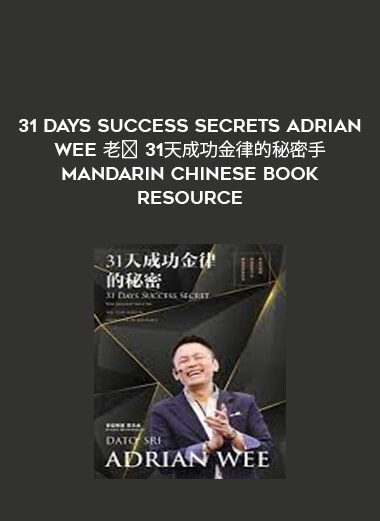



![Actioncoach.Kajab - Brad Sugars Profit Masters [Billionaire in Training] download](https://ivseed.info/wp-content/uploads/2022/03/zz.jpg)



